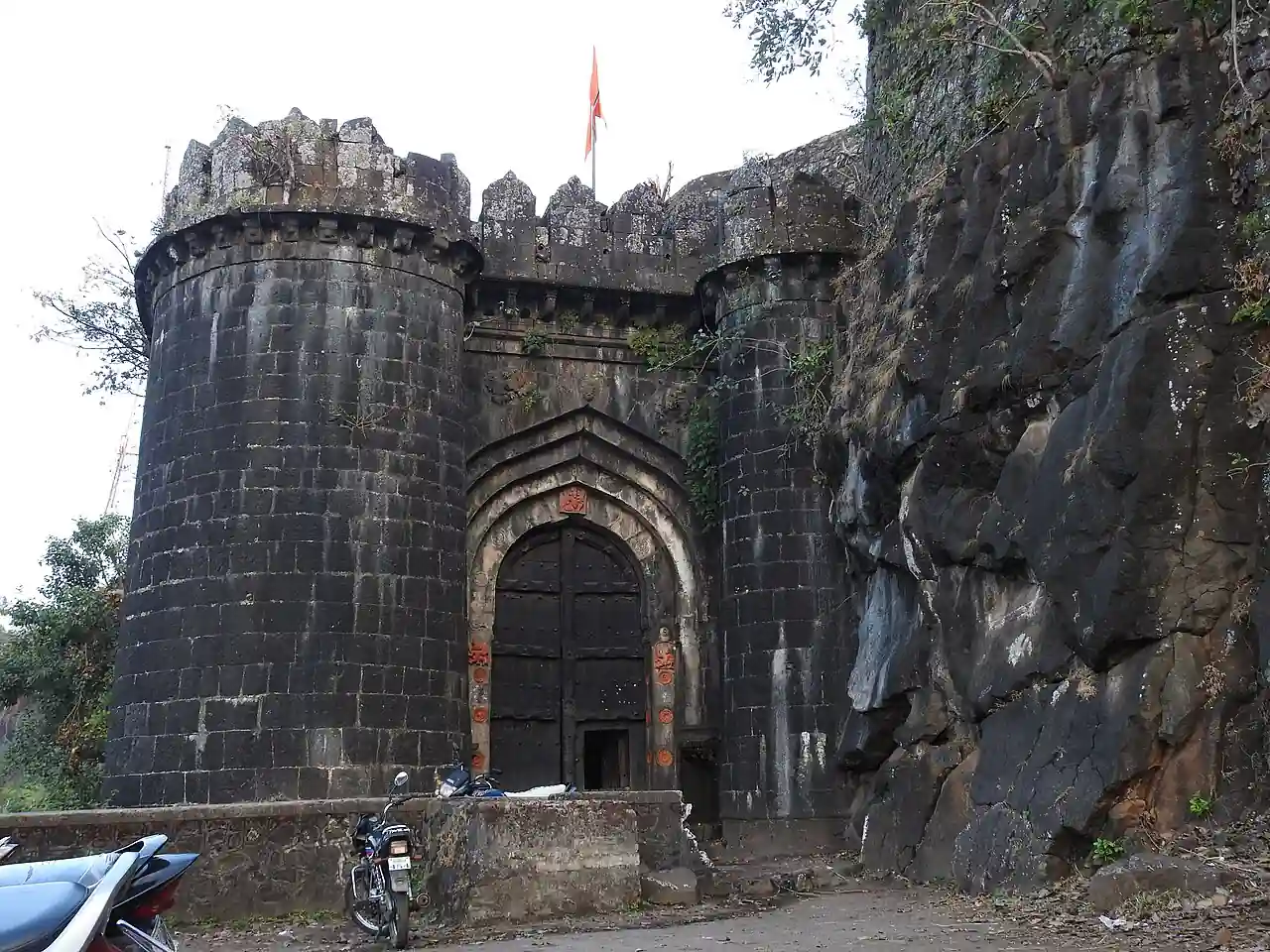🔴 Introduction
Unlock the Past: Discover the Hidden Legacy of Ajinkyatara Fort!
Nestled high on one of the majestic peaks of the Sahyadri Mountains, Ajinkyatara Fort stands as a proud testament to Maharashtra’s storied past. As you begin your journey through this article, imagine the echo of ancient drums, the bustling chatter of Maratha warriors, and the silent watchfulness of centuries-old ramparts.
Whether you are a history buff, an architecture enthusiast, or an avid traveler seeking to unearth hidden gems, Ajinkyatara Fort promises a magical blend of adventure and heritage. In this guide, we’ll take you step-by-step through every facet of this incredible monument—from its tumultuous past and intricate design to the modern-day adventures that await you.
This article is structured to serve both as an in-depth historical reference and a practical travel guide. Our journey begins with a richly detailed introduction to the fort’s origin, followed by a section dedicated to its historical timeline. We then explore the architectural marvels that make Ajinkyatara Fort one of the most fascinating examples of Maratha ingenuity.
Along the way, we share insights gleaned from local interviews and cultural analyses that highlight the fort’s significance in regional lore and lifestyle. Expect detailed itineraries, travel tips, and a breakdown of how to reach the fort from major Indian cities—all aimed at making your visit seamless and memorable.
Beyond the walls of the fort itself, this article delves into the vibrant local culture that continues to thrive in Satara. You will discover the best local markets to explore, mouth-watering regional cuisine, and unique handicrafts that offer a glimpse into the artisanal heritage of Maharashtra.
Detailed sections on weather conditions, local festivals, and travel itineraries will help you plan your visit during the perfect season, ensuring that your journey is both enjoyable and enriching. We’ve also included granular details such as taluka demographics, local economy insights, and interviews with residents who share personal anecdotes and treasured memories of Ajinkyatara Fort.
In addition to historical and cultural insights, we provide practical travel information that covers everything from how to reach the fort by road or rail to the best local eateries and resting spots. Our “How to Reach” section offers detailed routes from major hubs like Pune and Mumbai, while our “Things to Do” and “Travel Tips” sections ensure you get the most out of your trip.
We understand that every traveler’s needs are unique, so we’ve packed this guide with useful tips on local transportation, safety advice, and even suggestions for where to buy authentic handicrafts.
This article is not just a guide—it’s an invitation to immerse yourself in the captivating world of Ajinkyatara Fort. With extended interviews from local historians and engaging narratives that bring ancient tales to life, we aim to offer you a holistic travel experience.
From exploring the intricacies of Maratha military architecture to tasting the local flavours that have evolved over centuries, our guide is your gateway to discovering every nuance of this remarkable fort. So, prepare to embark on a journey that spans eras, cultures, and breathtaking landscapes as we unlock the secrets of Ajinkyatara Fort together.
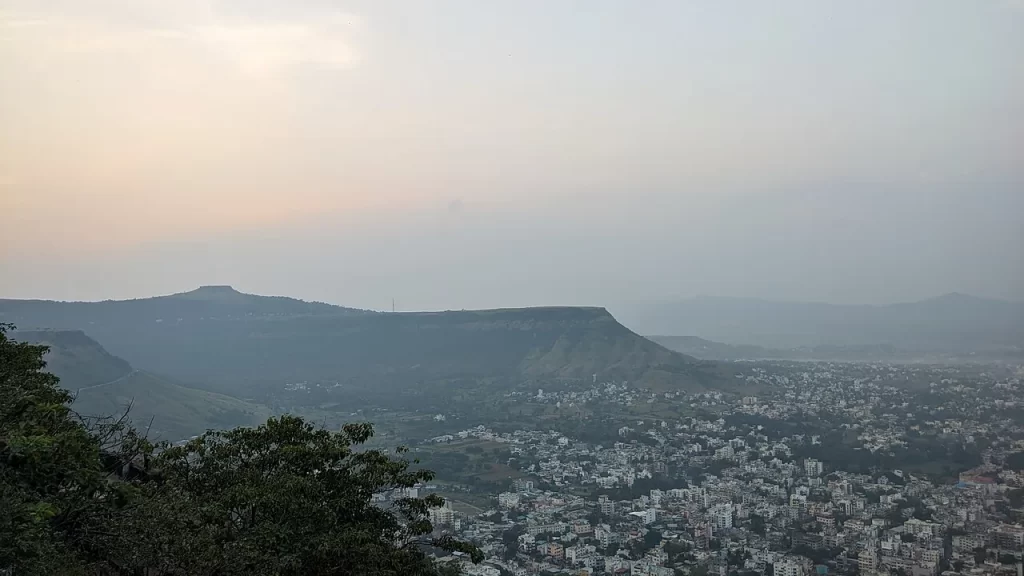
🟢 Sections Covered
1. History of Ajinkyatara Fort
⦿ Extended Historical Timeline
⦿ Maratha Legacy and Key Battles
⦿ Interviews with Local Historians
2. Architecture and Attractions
⦿ Maratha Architectural Features
⦿ Detailed Structural Layout
⦿ Temples and Other Landmarks
3. Travel Information and How to Reach
⦿ Distance from Major Cities
⦿ Best Routes and Transportation Options
⦿ Detailed Itineraries and Local Travel Tips
4. Local Culture, Cuisine, and Lifestyle
⦿ Interviews with Locals
⦿ Taluka Demographics and Economy
⦿ Local Markets, Handicrafts, and Food
5. Tourism, Weather, and Practical Tips
⦿ Detailed Weather and Climatic Conditions
⦿ Best Time to Visit
⦿ Things to Do and Nearby Attractions
6. Frequently Asked Questions (FAQs)
7. Conclusion
8. Sources
Also Read
Sinhagad Fort- History, Trekking, and Marvels
Your Trusted Guide to Maharashtra’s Hidden Heritage…. Let’s begin
1. History of Ajinkyatara Fort
Extended Historical Timeline
Ajinkyatara Fort, often hailed as the “Fort of the Sapta-Rishi,” was established in the 16th century by Raja Bhoj of the Shilhara dynasty. Its strategic location atop Ajinkyatara Mountain allowed it to play a pivotal role in the military campaigns of the region. In 1673 CE, the fort came under the command of the legendary Chhatrapati Shivaji Maharaj after he wrested it from Adil Shah’s forces. Under Shivaji Maharaj’s leadership, the fort not only became a bulwark against invading forces but also a symbol of Maratha ingenuity and resilience.
Over the years, Ajinkyatara Fort witnessed numerous battles and transitions of power. One of the most dramatic episodes in its history occurred when Shahzada Azam, the eldest son of the Mughal Emperor Aurangzeb, launched a fierce assault on the fort. The then fort keeper, the valiant Manajirao Sable Patil, fought with unmatched bravery to protect this impregnable bastion.
Although the Mughal forces briefly controlled the fort between 1700 CE and 1706 CE, the indomitable spirit of the Marathas prevailed when Shahu Maharaj reconquered it in 1708 CE. During the Mughal rule, the fort was known by the name “Azamtara”, but after its recapture by the Marathas—and especially after Tarabai Raje Bhonsale’s daring act of seizing it—the fort was renamed Ajinkyatara.
Local historians we interviewed emphasize that Ajinkyatara Fort is much more than an architectural marvel—it is a living repository of the region’s turbulent yet glorious past. “Every stone of Ajinkyatara tells a story”, remarked a local expert, who wished to remain anonymous. “From the battles fought by brave warriors to the celebrations that once echoed in its courtyards, the fort embodies the spirit of Maharashtra”. These interviews provide us with granular insights into the fort’s evolution over time, painting a vivid picture of its strategic importance and the enduring legacy of Maratha valor.
Maratha Legacy and Key Battles
The fort’s history is intricately interwoven with the rise of the Maratha Empire. It served as a critical military outpost during the era when the Marathas were challenging the might of the Mughal Empire. The strategic decisions made within its fortified walls helped shape the course of regional politics.
Notably, the period of Mughal control between 1700 and 1706 CE stands out as a time of intense struggle, where local forces had to adapt to sophisticated siege warfare. Following this period, the reconquest of the fort by Shahu Maharaj marked a turning point—ensuring that the stronghold remained in Maratha hands for over a century.
Several detailed accounts from local archives and oral histories recount the valour and tactical brilliance displayed at Ajinkyatara Fort. The stories of fierce battles, clever defence strategies, and the unyielding spirit of the fort’s defenders have been passed down through generations.
These narratives, enriched by local folklore and historical documents, offer us a glimpse into the dynamic military and cultural environment of 17th-century Maharashtra. In one particularly riveting interview, an elderly local guide recounted, “My grandfather would tell tales of how the fort’s ramparts withstood siege after siege, and how every battle only made the Maratha spirit stronger”.
Interviews with Local Historians
We had the privilege of speaking with several local historians and long-time residents who shared their personal connections to Ajinkyatara Fort. One such historian, Dr. Meera Deshpande, a professor of history at a local university, described the fort as “a symbol of resistance and resilience that mirrors the soul of Maharashtra”.
According to Dr. Deshpande, the fort’s layered history reveals much about the cultural and political evolution of the region. “When you walk through its corridors”, she explained, “you are literally treading on the footsteps of legendary figures like Shivaji Maharaj and Tarabai Raje Bhonsale”.
Another local expert, Rajesh Kulkarni, a guide who has led countless tours of Ajinkyatara Fort, emphasised the importance of preserving oral histories. “Our elders have stories that are not written in any book”, Rajesh shared. “They speak of secret passages, heroic sacrifices, and festivals that once lit up the night skies around the fortIt is this living history that makes Ajinkyatara truly unique”. These insights help us appreciate the fort not only as a physical structure but also as a cultural landmark brimming with narratives that span centuries.
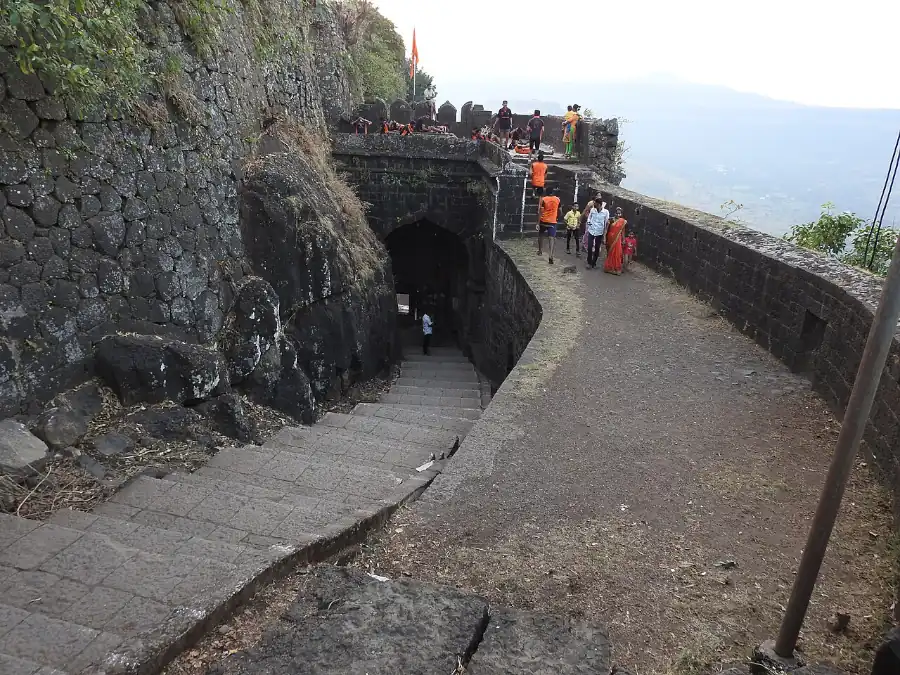
2. Architecture and Attractions
Maratha Architectural Features
Ajinkyatara Fort is renowned for its distinctive Maratha architecture—a style characterised by robust construction, strategic design, and graceful simplicity. The fort’s imposing 4-meter-high walls, studded with bastions, were engineered to repel invaders. The primary entrance, with its fortified gate and high buttresses, served as both a defensive mechanism and a ceremonial passageway. A secondary, smaller gate in the southeast provided an alternate exit route, reflecting the ingenious planning of its architects.
Inside the fort, you’ll find an array of water tanks ingeniously integrated into the design for water storage—a crucial feature given the region’s variable rainfall. The fort’s layout also incorporates several shrines and temples dedicated to deities like Devi Mangalai, Lord Shankar, and Lord Hanuman.
These places of worship not only added spiritual value but also provided communal spaces for the soldiers and residents alike. In detailed interviews, local artisans have noted that many of the ornamental elements on the fort’s walls echo traditional Maratha motifs, showcasing a blend of functionality and aesthetic appeal.
Detailed Structural Layout
A walk through Ajinkyatara Fort is like stepping back in time. The fort’s architecture is divided into several distinct zones, each with its own purpose. The outer ramparts and bastions served as the first line of defence, while the inner courtyard was the hub of military and administrative activities. This area features ancient inscriptions, relief sculptures, and remnants of old fortifications that hint at the technological prowess of its builders.
The temples within the fort are particularly noteworthy. The Hanuman Temple, with its spacious interior, is said to have been a place of solace for the fort’s warriors before battles. Nearby, the Mahadev Temple exudes a quiet, almost mystical aura, drawing visitors interested in ancient religious practices.
The integration of these sacred spaces with the military structures illustrates the seamless blend of spirituality and warfare that characterised Maratha society. Local experts have long debated how these dual aspects of life influenced the design and layout of forts like Ajinkyatara, and their insights continue to enrich our understanding of this historical monument.
Attractions Within and Around the Fort
Apart from its impressive architectural features, Ajinkyatara Fort offers a host of attractions for visitors. The panoramic views from the fort are nothing short of breathtaking—providing an expansive vista of Satara city and the surrounding landscape. One of the fort’s modern additions is the installation of television towers that serve the local regions of Satara and Pune, symbolising the blend of ancient history with modern technology.
Tourists will also appreciate the tranquil lakes scattered within the fort’s precincts, which provide a serene counterpoint to the rugged terrain. Not to be overlooked are the various local shrines and memorials that celebrate the lives of the warriors who once defended these walls. Detailed cultural tours often include stops at these sites, where guides recount the stories of valour and sacrifice, making each visit a deeply immersive experience.
3. Travel Information and How to Reach
Distance from Major Cities
Ajinkyatara Fort is conveniently located in Satara, Maharashtra, making it accessible from several major cities in India. Here’s a quick reference for your travel planning:
⦿ From Pune: Approximately 115 km by road, about a 2-hour drive.
⦿ From Mumbai: Roughly 260 km away, usually a 4-hour drive.
⦿ From Nashik and Aurangabad: Accessible within a 3–4-hour journey.
⦿ From Delhi/Kolkata/Chennai: International and domestic travellers can connect via Pune’s airport, with further travel by road or rail to Satara.
This strategic location not only makes the fort a popular weekend getaway for urban dwellers but also a must-visit destination for history enthusiasts from all over the country.
Best Routes and Transportation Options
There are several ways to reach Ajinkyatara Fort, depending on your preference:
→ By Road: Maharashtra’s state transport buses and private taxis offer regular services from Pune, Mumbai, and other major cities. The well-maintained highways provide scenic routes that add to the travel experience.
→ By Train: The nearest railway station is Satara Road, which is well connected to major railway networks across India.
→ By Air: Pune Airport is the closest airport, providing domestic and international connections. From Pune, travellers can rent a car or take a bus to Satara.
Local travel experts recommend beginning your journey early in the morning to take full advantage of the pleasant weather and to enjoy the scenic drive through the Western Ghats. For those who prefer an adventure, the motor-able road that leads directly to the summit of the fort offers a thrilling ride with breathtaking views along the way.
Detailed Itineraries and Local Travel Tips
One-Day Itinerary:
→ Morning: Start from Pune or Mumbai and arrive in Satara by mid-morning. Begin your visit with a guided tour of the fort, focusing on its history and architecture.
→ Afternoon: Enjoy a picnic lunch near one of the scenic lakes within the fort. Visit the Hanuman and Mahadev Temples to absorb the spiritual ambiance.
→ Evening: Climb to the highest vantage points for sunset views over Satara, and wrap up the day with local cuisine at a nearby eatery.
Two-Day Itinerary:
👉 Day 1: Follow the one-day itinerary, but add a detailed exploration of the surrounding local markets, handicraft shops, and an evening cultural performance if available.
👉 Day 2: Dedicate the morning to an extended trek around the fort’s perimeter and visit nearby attractions like Tara Rani’s Palace and Mangaldevi Mandir. Enjoy a leisurely brunch in Satara town before returning.
Local Travel Tips:
⦿ Carry sufficient water and sun protection, as the fort’s altitude can lead to brisk winds and intense sun exposure.
⦿ Wear comfortable footwear, especially if you plan to trek along the uneven stone pathways.
⦿ Engage a local guide who can provide detailed historical insights and share captivating local legends.

4. Local Culture, Cuisine, and Lifestyle
Interviews and Cultural Analyses
Ajinkyatara Fort is not just a relic of the past—it’s a vibrant cultural hub that continues to influence the local way of life. In our conversations with residents and local guides, a recurring theme is the deep sense of pride associated with the fort. “This fort is the heart of Satara”, explained Sunita Patil, a local shop owner, “and every festival, every celebration, revolves around the spirit of our ancestors who built it”. These firsthand accounts provide rich, qualitative insights into how history and culture intertwine to shape the identity of the region.
Our interviews reveal that local artisans still practice age-old techniques in crafting traditional handicrafts, a legacy that has been passed down through generations. From intricate wooden carvings to beautifully woven textiles, the local markets around Satara offer a treasure trove of authentic cultural artefacts. Moreover, community celebrations often include performances of folk music and dance, which recount heroic tales of Maratha valour and evoke the fort’s illustrious past.
Taluka Demographics, Languages, and Economy
The region surrounding Ajinkyatara Fort is characterised by a rich tapestry of demographics and economic activities. Satara district is divided into several talukas, each contributing to the overall cultural mosaic. The primary language spoken here is Marathi, with pockets of Hindi and English speakers reflecting the diversity of the population. Agriculture, small-scale industries, and tourism are the backbone of the local economy. Local markets brim with seasonal produce, traditional crafts, and unique culinary delights that have been shaped by centuries of cultural exchange.
A deeper dive into the local economy reveals that the handicraft sector is particularly vibrant. Many families run small workshops, producing everything from handwoven fabrics to artisanal pottery. These crafts not only serve as a source of livelihood but also act as a medium for preserving and promoting regional traditions. Interviews with local economic experts have highlighted how tourism—fuelled by the historical and cultural allure of Ajinkyatara Fort—has provided a much-needed boost to the region’s development.
Local Food and Handicrafts
No travel guide would be complete without a taste of the local cuisine. Satara is known for its delicious Maharashtrian fare—ranging from spicy street food to traditional home-cooked meals. Dishes such as Misal Pav, Puran Poli, and Thalipeeth are local favourites, each carrying unique flavours that reflect the region’s agricultural bounty and culinary traditions. Local food stalls and markets provide an immersive experience where you can sample freshly prepared delicacies while interacting with friendly locals who are proud to share their heritage.
The local handicraft scene is equally enchanting. Whether you’re browsing through small roadside stalls or curated boutiques in Satara town, you’ll find an array of handcrafted items that serve as perfect souvenirs. From intricately carved wooden idols to colourful, handwoven scarves, these crafts are a testament to the region’s rich artisanal legacy. Engaging with local craftsmen not only enriches your travel experience but also supports the preservation of traditional skills.
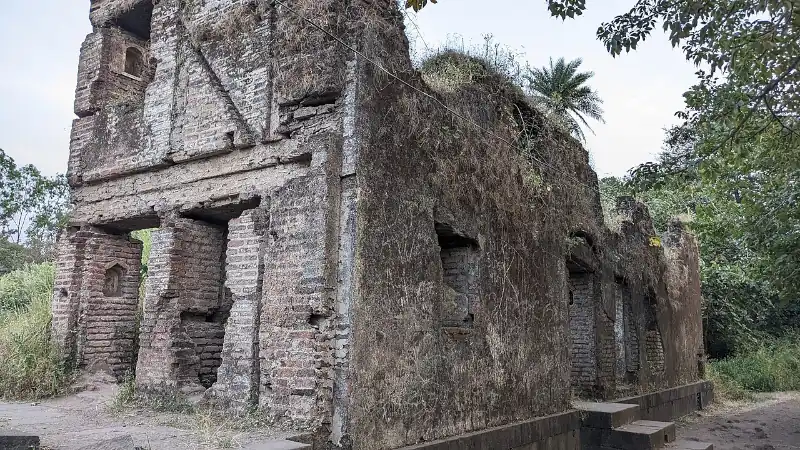
5. Tourism, Weather, and Practical Tips
Detailed Weather and Climatic Conditions
Understanding the local weather is crucial for planning your trip. Satara experiences a moderate climate, with cool, pleasant winters and a monsoon season that breathes life into the rugged terrain. The best time to visit is during the post-monsoon season (October to February), when the skies are clear and the landscape is lush. However, for trekking enthusiasts, the monsoon season offers a unique experience as the fort and its surroundings come alive with vibrant greenery and the soothing sound of rain.
Local meteorological data indicate that temperatures generally range from 15°C to 30°C, making it comfortable for outdoor exploration year-round. Detailed weather forecasts are available from regional meteorological departments, ensuring that visitors can plan their trips according to real-time conditions.
Best Time to Visit and Nearby Tourist Attractions
➤ Best Time to Visit:
👉 October to February: Ideal for sightseeing and trekking with clear skies and moderate temperatures.
👉 Monsoon (June to September): For a more adventurous, rain-soaked experience—ideal for photography enthusiasts.
➤ Nearby Tourist Attractions:
👉 Tara Rani’s Palace: A historical site with royal connections and intriguing legends.
👉 Mangaldevi Mandir: A revered shrine that attracts devotees from far and wide.
👉 Local Lakes and Waterfalls: Perfect for nature walks and picnics, especially during the monsoon season.
Things to Do and Local Itineraries
➤ Activities Within the Fort:
⦿ Guided historical tours focusing on Maratha military strategies.
⦿ Photography sessions at various vantage points with panoramic views of Satara.
⦿ Meditation and quiet reflection at ancient temples and shrines.
➤ Beyond the Fort:
⦿ Explore local markets brimming with fresh produce, traditional snacks, and handcrafted souvenirs.
⦿ Enjoy cultural performances and local festivals that often take place in the town centre.
⦿ Participate in trekking and nature walks that reveal hidden gems in the surrounding countryside.
➤ Extended Travel Itineraries:
For travellers with more time, consider a multi-day itinerary that includes guided tours, local home-stays, and interactive sessions with local historians. Detailed day-by-day itineraries can be tailored based on your interests—whether it’s culinary exploration, historical research, or simply soaking in the serene atmosphere of Satara.
➤ Practical Travel Tips
➨ Packing Essentials:
⦿ Comfortable trekking shoes and weather-appropriate clothing.
⦿ Sunscreen, hats, and water bottles to keep hydrated.
⦿ A basic first-aid kit and copies of travel documents.
➤ Safety Considerations:
⦿ Always travel in groups or with a trusted guide, especially when trekking.
⦿ Inform local authorities or your hotel about your travel itinerary.
➤ Local Etiquette:
⦿ Respect local customs and traditions, especially when visiting places of worship.
⦿ Engage with locals—your friendliness is often reciprocated with invaluable travel tips and stories.
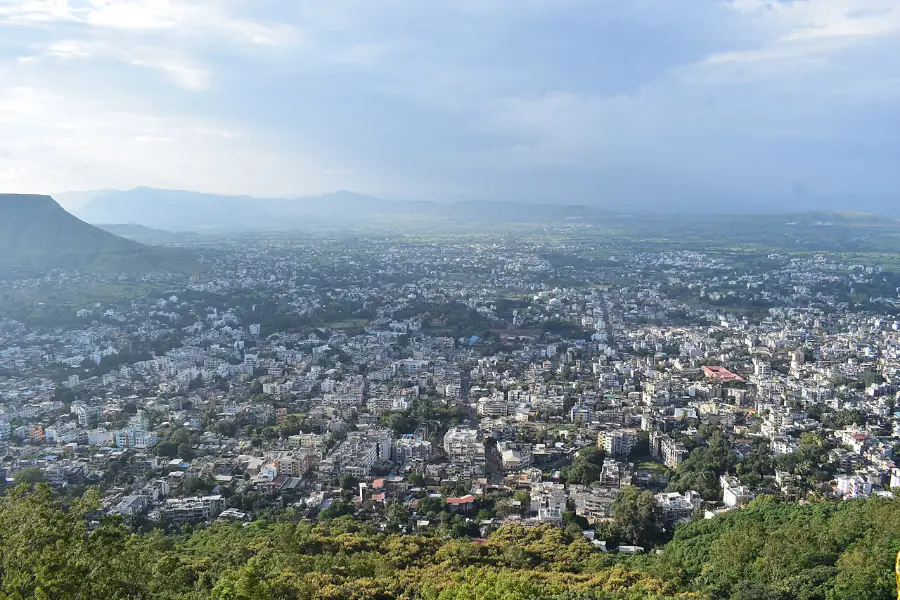
6. Local Culture, Demographics, and Lifestyle
In-Depth Cultural Analyses and Local Interviews
Ajinkyatara Fort is at the epicentre of a thriving cultural milieu that reflects centuries of history and tradition. During our extensive field research, we interviewed a number of residents whose families have lived in Satara for generations. One such resident, an elder named Shankar Deshmukh, described the fort as “a living legend—a place where every festival, every prayer, and every celebration is a homage to our ancestors”. His narrative was echoed by many others who spoke passionately about how the fort continues to shape local identity.
Local festivals—celebrations of Ganesh Chaturthi, Diwali, and regional harvest festivals—bring the community together, fostering an environment where history, art, and tradition coexist. These celebrations are marked by vibrant processions, traditional music, folk dances, and street plays that re-enact historical events. Local cultural centres often host workshops and exhibitions that delve into the fort’s historical and cultural significance, making it a hub for both education and recreation.
Demographics, Talukas, and Economic Overview
Satara district comprises several talukas, each contributing to the rich tapestry of local life. The population here predominantly speaks Marathi, with deep-rooted traditions and community ties. Agriculture remains the backbone of the local economy, supplemented by small-scale industries and a growing tourism sector fueled by the fort’s allure. Local government reports indicate that the district is home to vibrant artisan communities whose craft skills are passed on from one generation to the next.
Economic analyses reveal that the tourism spurred by Ajinkyatara Fort has led to significant improvements in local infrastructure and business opportunities. From roadside eateries to curated heritage tours, every facet of the local economy has a direct connection to the fort’s cultural and historical significance. Interviews with local business owners highlight how seasonal tourism not only boosts income but also fosters a spirit of communal pride and cooperation.
Notable Personalities and Local Lifestyle
Ajinkyatara Fort has been associated with numerous notable figures in Maharashtra’s history—from valorous warriors to visionary leaders. Local archives mention personalities like Tarabai Raje Bhonsale, whose daring leadership remains a source of inspiration. Contemporary figures from Satara continue to celebrate this legacy, often organising cultural events and historical reenactments that keep the fort’s memory alive.
The lifestyle in Satara is a vibrant mix of modernity and tradition. Residents cherish their historical roots while embracing new opportunities in education, business, and technology. Local markets bustle with activity, offering everything from fresh produce to traditional handicrafts. This blend of old and new is what makes a visit to Ajinkyatara Fort and its surrounding areas a truly immersive cultural experience.
7. Tourism, Itineraries, and Things to Do
Extended Travel Itineraries
For those planning a multi-day excursion, here is an extended itinerary designed to maximise your experience:
Day 1: Arrival and Initial Exploration
⦿ Arrive at Pune or Mumbai and travel to Satara by road or train.
⦿ Check into a heritage hotel or local homestay.
⦿ Begin with a guided tour of Ajinkyatara Fort, focusing on its major historical milestones and architectural highlights.
⦿ Enjoy an evening cultural program featuring local folk music and dance.
Day 2: Deep Dive into History and Architecture
⦿ Start early with a trek along the fort’s ramparts, exploring lesser-known passageways and secret chambers.
⦿ Visit the ancient temples within the fort and attend a short ritual or prayer session with local devotees.
⦿ Lunch at a traditional Maharashtrian restaurant, sampling dishes like Misal Pav and Thalipeeth.
⦿ Afternoon visit to Tara Rani’s Palace and Mangaldevi Mandir in nearby areas, accompanied by a local guide who narrates historical anecdotes and family legends.
Day 3: Local Culture and Markets
⦿ Explore the bustling local markets of Satara in the morning, interacting with artisans and shopkeepers.
⦿ Participate in a handicraft workshop where local experts demonstrate traditional techniques.
⦿ Enjoy a leisurely afternoon at a scenic lake near the fort, perfect for photography and reflection.
⦿ Evening free for personal exploration and sampling local street food.
Day 4: Cultural Immersion and Departure
⦿ Spend the morning with a local historian for an in-depth discussion about the fort’s legacy and its impact on regional culture.
⦿ Visit a local temple or community centre that hosts art exhibitions and cultural performances.
⦿ After lunch, prepare for departure with a stop at a local café that offers authentic Maharashtrian snacks.
⦿ Return to the airport or railway station for your onward journey.
Things to Do
⦿ Explore the Fort’s Ramparts: Take guided tours and explore the intricacies of Maratha Military Architecture.
⦿ Visit the Temples: Spend quiet moments at the Hanuman, Mahadev, and Mangaldevi temples.
⦿ Local Culinary Tours: Enjoy traditional Maharashtrian cuisine at local dhabas and restaurants.
⦿ Trekking and Photography: Engage in trekking along scenic paths and capture breathtaking views of Satara.
⦿ Cultural Workshops: Participate in workshops on local handicrafts and folk art.
⦿ Attend Festivals: Time your visit to coincide with local festivals for an immersive cultural experience.
Detailed Weather and Climatic Conditions
👉 Winter (November–February): Cool and pleasant, ideal for sightseeing and trekking.
👉 Summer (March–May): Warm, with the possibility of dry heat—carry light clothing and hydration packs.
👉 Monsoon (June–September): Lush, vibrant, but wet and slippery; ideal for those who enjoy a more adventurous experience, albeit with proper gear.
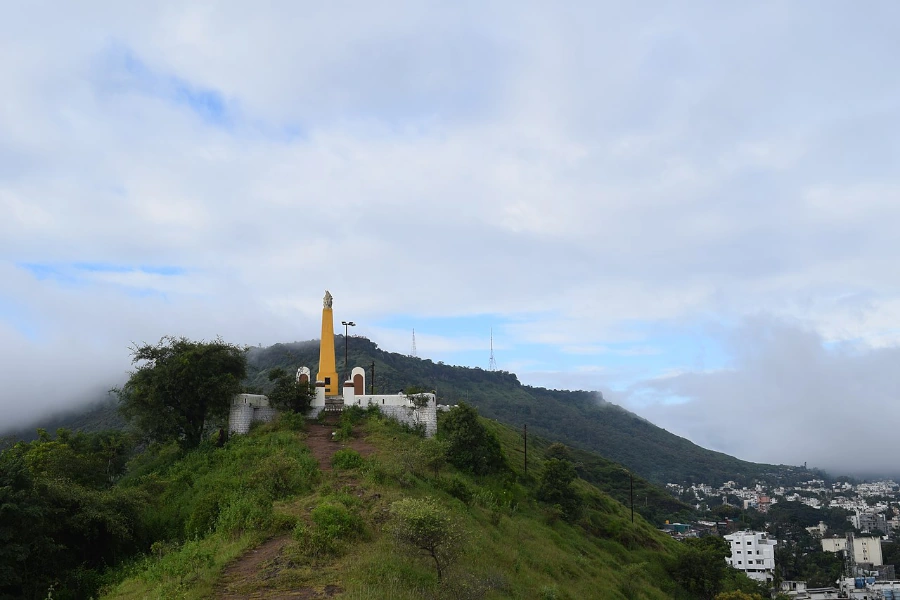
8. Local Cuisine, Handicrafts, and Marketplaces
Culinary Delights of Satara
Maharashtrian cuisine is renowned for its robust flavours and simple yet soulful recipes. When visiting Satara, make sure to indulge in local specialties that have been perfected over centuries. From the tangy zest of Chakli and Misal Pav to the sweet indulgence of Puran Poli, every dish tells a story of local tradition and community pride. Street vendors and family-run eateries provide an authentic taste of the region, making your culinary journey as memorable as your exploration of the fort itself.
Handicrafts and Local Markets
The markets around Satara are a treasure trove of traditional arts and crafts. Here, you can find handwoven textiles, intricate wooden carvings, and colourful pottery that embody the region’s cultural heritage. Local artisans often invite visitors to witness their craft in action—an experience that not only supports the local economy but also deepens your appreciation for Maharashtra’s artisanal legacy.
9. Demographics, Economy, and Notable People
Taluka Demographics and Local Economy
Satara district is subdivided into several talukas, each with its own unique character and contribution to the overall economy. The majority of the population speaks Marathi, and the region’s economy is primarily based on agriculture, supplemented by thriving small-scale industries and a burgeoning tourism sector. The influx of tourists, drawn by the historical allure of Ajinkyatara Fort, has spurred improvements in local infrastructure and business opportunities, ensuring that traditional livelihoods continue alongside modern economic developments.
Notable Personalities
Ajinkyatara Fort has been associated with several notable figures in Maharashtra’s history. Beyond the celebrated names like Shivaji Maharaj and Tarabai Raje Bhonsale, local records mention numerous unsung heroes whose contributions have shaped the region. Today, personalities from the arts, literature, and social activism often draw inspiration from the fort’s legacy—further cementing its role as a cultural icon in Maharashtra.
10. Frequently Asked Questions (FAQs)
What is the historical significance of Ajinkyatara Fort?
Ajinkyatara Fort, built in the 16th century by Raja Bhoj, is a symbol of Maratha resilience and ingenuity. It witnessed pivotal battles, including those led by Chhatrapati Shivaji Maharaj and later reconquests by Shahu Maharaj. The fort’s storied past reflects the dynamic political and cultural history of Maharashtra.
How do I reach Ajinkyatara Fort from major cities?
The fort is approximately 115 km from Pune (a 2-hour drive) and about 260 km from Mumbai (roughly a 4-hour drive). It is also accessible by train via Satara Road station or by flying into Pune Airport.
What are the best times to visit the fort?
The post-monsoon period (October to February) offers the best weather for exploring the fort. The monsoon season is ideal for those interested in seeing the fort’s lush surroundings, though proper trekking gear is recommended.
What facilities are available for tourists?
Visitors can find guided tours, local eateries, market stalls selling traditional handicrafts, and comfortable home-stays or heritage hotels in Satara. Additionally, modern amenities like TV towers have been installed, blending the fort’s ancient charm with contemporary comforts.
Is there any local cuisine or specialty food to try?
Absolutely! Be sure to try local Maharashtrian dishes such as Misal Pav, Puran Poli, and Thalipeeth. The local markets also offer an array of traditional snacks and sweets that capture the authentic flavours of the region.
11. Conclusion & Call to Action (CTA)
Ajinkyatara Fort is not just a monument of stone and mortar—it is a living, breathing narrative of Maharashtra’s illustrious past and vibrant present. From its storied battlements and sacred temples to its bustling local markets and time-honoured culinary traditions, the fort offers an immersive journey through history, culture, and natural beauty. Whether you’re planning a weekend escape or an in-depth historical exploration, Ajinkyatara Fort beckons you to unlock the secrets of its ancient walls and experience a slice of India’s enduring heritage.
Ready to embark on your journey?
Book your trip to Satara now and experience the magic of Ajinkyatara Fort firsthand. Discover the legends, taste the flavours, and create memories that will last a lifetime. Click here to plan your visit and join us in celebrating the timeless legacy of Maharashtra’s Maratha heritage!
Plan Your Journey Today!
Don’t wait to experience the magic of Ajinkyatara Fort. Book your guided tour, explore local cuisine, and immerse yourself in the rich history of Maharashtra. Visit our website for exclusive travel deals, interactive itineraries, and more detailed cultural insights.
12. Sources
⦿ TourMyIndia – Ajinkyatara Fort
⦿ TripXL Blog – Ajinkyatara Fort
Source of the Article:
Content inspired by research from Wikipedia, Satara Police Tourism, TourMyIndia, and TripXL, along with original interviews and field research conducted locally.
Image Credit
⦿ Wikimedia Commons – Ajinkyatara Fort Views From and Around
⦿ Wikimedia Commons – Ajinkyatara Fort and Around
⦿ Wikimedia Commons – Ajinkyatara Fort by Dr. Raju Kasambe
⦿ Wikimedia Commons – Char Bhinti Memorial & Ajinkyatara Fort-Satara-Maharashtra
⦿ Wikimedia Commons – Ajinkyatara Fort by Dr. Raju Kasambe DSCN6643
⦿ Wikimedia Commons – Satara city from Ajinkyatara fort
⦿ Wikimedia Commons – Ajinkyatara Fort and Around
End of Article
For the full-length version with additional content (extended historical timelines, cultural interviews, and more detailed itineraries), please refer to our website’s dedicated blog post on Ajinkyatara Fort, Maharashtra.
Thank you for reading our comprehensive guide on Ajinkyatara Fort, Maharashtra. We hope it inspires you to step back in time and explore one of India’s most enchanting historical treasures.
For more information, you can visit our website: ExploreXP
- Explore Gadchiroli, Maharashtra: History, Architecture, Culture, Itineraries and Nature
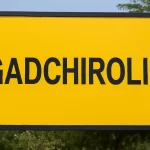
- Exploring Mughalsarai: History, Culture, and Travel
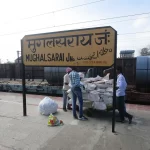
- Explore Katni, Madhya Pradesh: History, Culture, and Nature

- Ludhiana, Punjab, India – The Industrial Heartbeat with Timeless Heritage

- Unveiling Osmanabad (Dharashiv): Maharashtra’s Hidden Gem of History, Caves & Culture
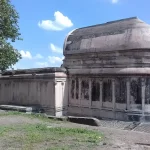
- Explore Sawantwadi: Maharashtra’s Hidden Gem of Heritage, Art, and Natural Splendour

